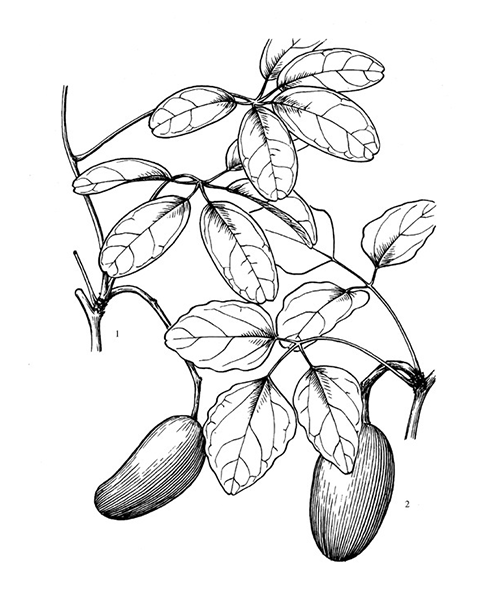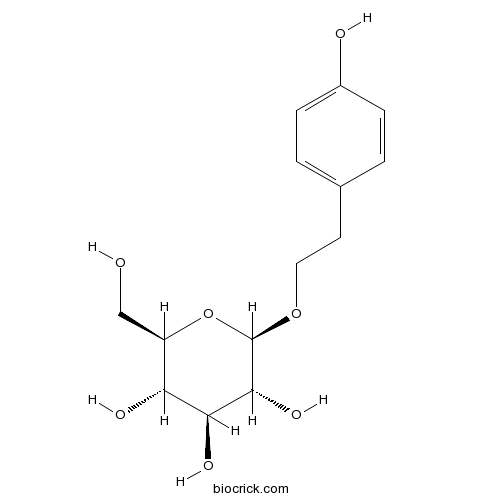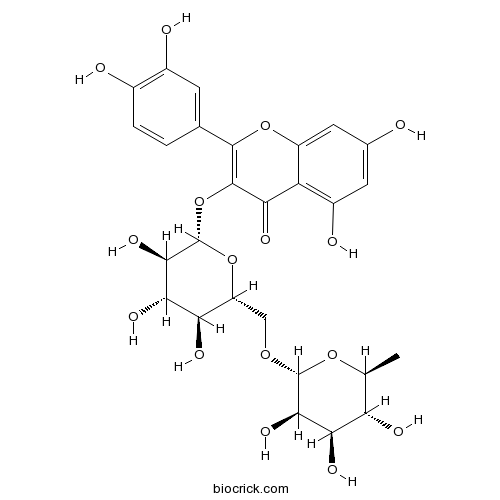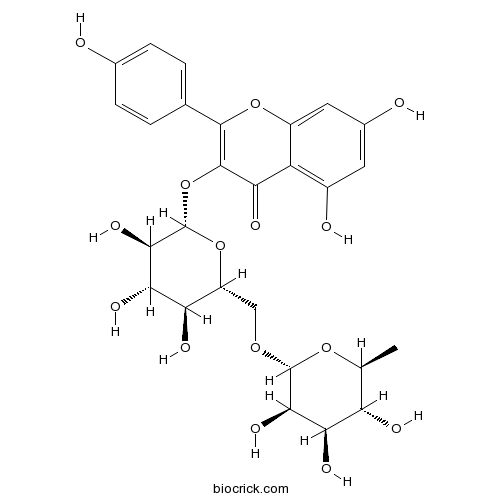Akebia quinata
Akebia quinata
1. The products in our compound library are selected from thousands of unique natural products; 2. It has the characteristics of diverse structure, diverse sources and wide coverage of activities; 3. Provide information on the activity of products from major journals, patents and research reports around the world, providing theoretical direction and research basis for further research and screening; 4. Free combination according to the type, source, target and disease of natural product; 5. The compound powder is placed in a covered tube and then discharged into a 10 x 10 cryostat; 6. Transport in ice pack or dry ice pack. Please store it at -20 °C as soon as possible after receiving the product, and use it as soon as possible after opening.

Natural products/compounds from Akebia quinata
- Cat.No. Product Name CAS Number COA
-
BCN5966
Salidroside10338-51-9
Instructions

-
BCN2787
Calceolarioside B105471-98-5
Instructions

-
BCN6059
Syringin118-34-3
Instructions

-
BCN1684
Rutin153-18-4
Instructions

-
BCN1126
Nicotiflorin17650-84-9
Instructions

-
BCN5159
alpha-Hederin27013-91-8
Instructions

-
BCN1085
Hederasaponin B36284-77-2
Instructions

-
BCN5513
Hederagenin465-99-6
Instructions

-
BCN5616
Oleanolic acid508-02-1
Instructions

Antioxidative and Anti-Inflammatory Activities of Akebia quinata Extracts in an In Vitro Model of Acute Alcohol-Induced Hepatotoxicity.[Pubmed: 28816585]
This study investigated the effects of Akebia quinata (AQ) leaf and fruit extract on acute alcohol-induced hepatotoxicity in AML12 cells. Different concentrations of AQ extracts (250 and 2500 μg/mL) were used to treat the AML12 cells with or without ethanol for 24 h for inducing acute alcohol cytotoxicity. AQ extract-treated AML12 cells showed enhanced expression of GSH-synthesizing enzymes and suppressed expression of oxidative stress makers such as NOX4, and decreased expression of tumor necrosis factor-α, inflammatory marker, in acute alcohol-induced hepatotoxicity. Furthermore, it was observed that 100 mM ethanol treatment of AML12 cells resulted in global change of mRNA expression in microarray, but AQ leaf extract treatment reversed the global change of mRNA expression pattern into normal condition. In conclusion, AQ extract or functional component from AQ can be useful therapeutic agent in acute alcohol-induced hepatotoxicity by reducing oxidative stress and inflammation responses.
Protein Tyrosine Phosphatase 1B Inhibitors from the Stems of Akebia quinata.[Pubmed: 27548130]
PTP1B deficiency in mouse mammary tumor virus (MMTV)-NeuNT transgenic mice inhibited the onset of MMTV-NeuNT-evoked breast cancer, while its overexpression was observed in breast cancer. Thus, PTP1B inhibitors are considered chemopreventative agents for breast cancer. As part of our program to find PTP1B inhibitors, one new diterpene glycoside (1) and 13 known compounds (2-14) were isolated from the methanol extract of the stems of Akebia quinata. All isolates were identified based on extensive spectroscopic data analysis, including UV, IR, NMR and MS. Compounds 2, 3, 6, 8 and 11 showed significant inhibitory effects on the PTP1B enzyme, with IC50 values ranging from 4.08 ± 1.09 to 21.80 ± 4.74 μM. PTP1B inhibitors also had concentration-dependent cytotoxic effects on breast cancer cell lines, such as MCF7, MDA-MB-231 and tamoxifen-resistant MCF7 (MCF7/TAMR) (IC50 values ranging from 0.84 ± 0.04 to 7.91 ± 0.39 μM). These results indicate that compounds 6 and 8 from Akebia quinata may be lead compounds acting as anti-breast cancer agents.
Direct analysis of prostaglandin-E2 and -D2 produced in an inflammatory cell reaction and its application for activity screening and potency evaluation using turbulent flow chromatography liquid chromatography-high resolution mass spectrometry.[Pubmed: 27524299]
Direct analysis of prostaglandin-E2 (PGE2) and -D2 (PGD2) produced from a RAW264.7 cell-based reaction was performed by liquid chromatography high-resolution mass spectrometry (LC-HRMS), which was online coupled with turbulent flow chromatography (TFC). The capability of this method to accurately measure PG levels in cell reaction medium containing cytokines or proteins as a reaction byproduct was cross-validated by two conventional methods. Two methods, including an LC-HRMS method after liquid-liquid extraction (LLE) of the sample and a commercial PGE2 enzyme-linked immunosorbent assay (ELISA), showed PGE2 and/or PGD2 levels almost similar to those obtained by TFC LC-HRMS over the reaction time after LPS stimulation. After the cross-validation, significant analytical throughputs, allowing simultaneous screening and potency evaluation of 80 natural products including 60 phytochemicals and 20 natural product extracts for the inhibition of the PGD2 produced in the cell-based inflammatory reaction, were achieved using the TFC LC-HRMS method developed. Among the 60 phytochemicals screened, licochalcone A and formononetin inhibited PGD2 production the most with IC50 values of 126 and 151nM, respectively. For a reference activity, indomethacin and diclofenac were used, measuring IC50 values of 0.64 and 0.21nM, respectively. This method also found a butanol extract of Akebia quinata Decne (AQ) stem as a promising natural product for PGD2 inhibition. Direct and accurate analysis of PGs in the inflammatory cell reaction using the TFC LC-HRMS method developed enables the high-throughput screening and potency evaluation of as many as 320 samples in less than 48h without changing a TFC column.
Effect of Beverage Containing Fermented Akebia quinata Extracts on Alcoholic Hangover.[Pubmed: 27069900]
The present study was conducted to investigate the effects of beverages containing fermented Akebia quinata extracts on alcoholic hangover. For this study, 25 healthy young men were recruited. All participants consumed 100 mL of water (placebo), commercial hangover beverage A or B, fermented A. quinata leaf (AQL) or fruit (AQF) extract before alcohol consumption. After 1 h, all participants consumed a bottle of Soju, Korean distilled liquor (360 mL), containing 20% alcohol. Blood was collected at 0 h, 1 h, 3 h, and 5 h after alcohol consumption. The plasma alanine transaminase (ALT) activity was highest in the placebo group. Compared with the control group, the AQL and AQF groups showed decreased ALT activity at 5 h after alcohol consumption. Plasma ethanol concentration was increased after alcohol intake and peaked at 3 h after alcohol consumption. Compared with the control group, the A group showed a higher plasma ethanol concentration at 1 h (P<0.05). At 3 h after alcohol consumption, the AQF group showed the lowest mean plasma ethanol concentration compared to the other groups; however, there were no statistical differences. After 5 h of alcohol consumption, the AQL and AQF groups showed lower plasma ethanol concentrations compared with the B group. The sensory evaluation score for the fermented A. quinata fruit extract was lower than for the commercial hangover beverages. In conclusion, the present intervention study results suggest that fermented A. quinata extracts alleviate alcoholic hangover and reduce plasma ethanol concentrations.
Native fruit tree genetic resources in Japan.[Pubmed: 27069393]
The diversity of climate, from subarctic to subtropical, and the complex geological history of Japan have produced a rich biodiversity. The flora includes several hundred species of native woody plants with edible fleshy fruits or nuts. People have eaten them from prehistoric times until about a half century ago. In Hokkaidō and the Ryūkyū Islands nut species had an important role in the diet, but fleshy fruits were also eaten until recently. Only Castanea crenata and a few minor species became domesticated as edible fruit trees in pre-modern times. Recently, Vitis coignetiae, Lonicera caerulea, Akebia quinata, Akebia trifoliata, Stauntonia hexaphylla, and Actinidia arguta have entered small-scale cultivation. The conservation of the germplasm of many of these native species, both in situ and ex situ, is precarious.
Ameliorating Effect of Akebia quinata Fruit Extracts on Skin Aging Induced by Advanced Glycation End Products.[Pubmed: 26569300]
The accumulation of free radicals and advanced glycation end products (AGEs) in the skin plays a very important role in skin aging. Both are known to interact with each other. Therefore, natural compounds or extracts that possess both antioxidant and antiglycation activities might have great antiageing potential. Akebia quinata fruit extract (AQFE) has been used to treat urinary tract inflammatory disease in traditional Korean and Chinese medicines. In the present study, AQFE was demonstrated to possess antioxidant and antiglycation activity. AQFE protects human dermal fibroblasts (HDFs) from oxidative stress and inhibits cellular senescence induced by oxidative stress. We also found that AQFE inhibits glycation reaction between BSA and glucose. The antiglycation activity of AQFE was dose-dependent. In addition, the antiglycation activity of AQFE was confirmed in a human skin explant model. AQFE reduced CML expression and stimulated fibrillin-1 expression in comparison to the methyglyoxal treatment. In addition, the possibility of the extract as an anti-skin aging agent has also been clinically validated. Our analysis of the crow's feet wrinkle showed that there was a decrease in the depth of deep furrows in RI treated with AQFE cream over an eight-week period. The overall results suggest that AQFE may work as an anti-skin aging agent by preventing oxidative stress and other complications associated with AGEs formation.


